
Wolf Wolfensberger - The Influence of the Person and his Ideas Today | A Festschrift
Festschrift in honour of Dr. Wolf Wolfensberger
Wolf Wolfensberger was born in Germany in 1934, emigrated to US in 1950, received his PhD. in 1960, and began a career that had him living in Omaha, Nebraska, Toronto, Ontario, Canada, and eventually Syracuse, New York, where he lived for the rest of his life. But wherever he lived he was always traveling around the world spreading ideas for much-needed reform of services to people with intellectual impairments – ideas that have indeed had world-wide impact. This book reviews various areas and angles of his work commemorating the scholarship and influence of this giant in the field of human services of the second half of the 20th century.
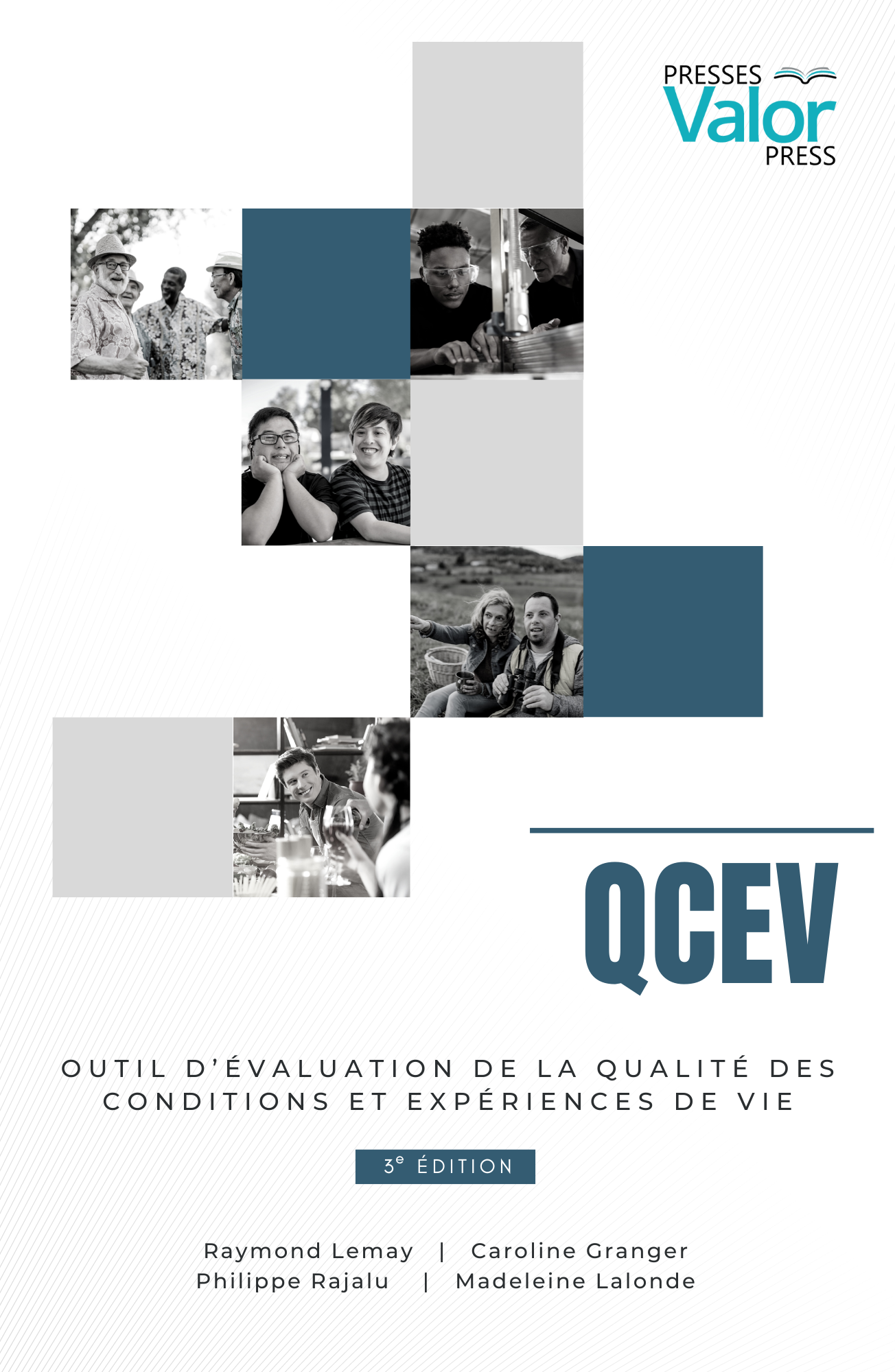
QCEV analogique
Ce qui est mesuré attire l’attention et, ainsi, cet outil d’évaluation de la Qualité des Conditions et Expériences de Vie (QCEV) estime si l’intervention fait une différence réelle et tangible dans la vie des gens qui utilisent des services humains, quels qu’ils soient.
Le but de l’intervention est de permettre à la personne de mener une vie pleine et de bénéficier des bonnes choses de la vie. L’objectif de cet outil est de permettre à l’intervenant de mesurer l’efficacité de ses interventions et, s’il y a lieu, de les modifier.
Veuillez appuyer sur le lien ci-dessous pour télécharger la version PDF de l’échelle analogique (formulaire des mesures).
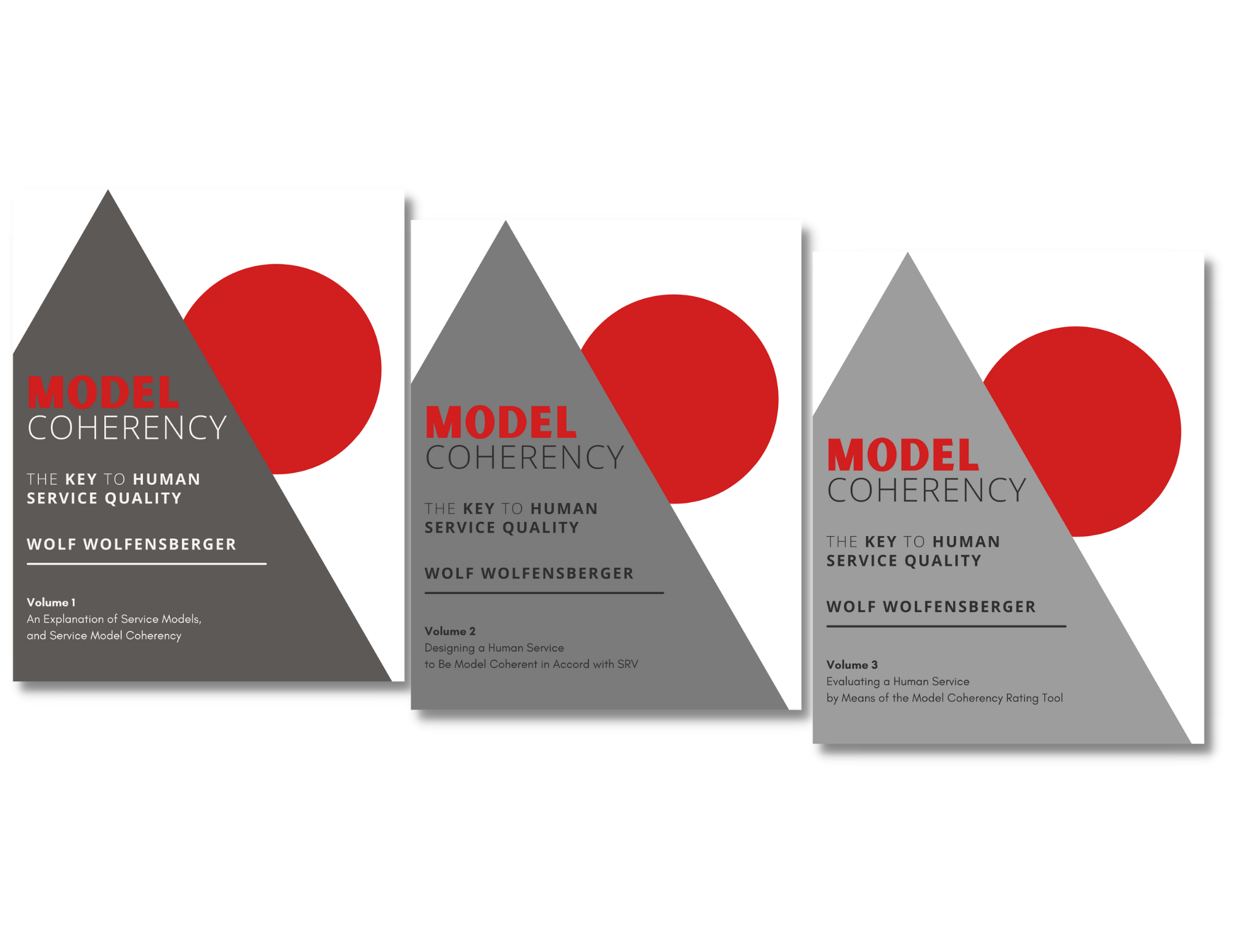
MODEL COHERENCY The Key to Human Service Quality - Set of 3
(20% discount for orders over 4 series)
Volume 1 – An Explanation of Service Models, and Service Model Coherency
Volume 2 – Designing a Human Service to Be Model Coherent in Accord with SRV
Volume 3 – Evaluation a Human Service by Means of the Model Coherency Rating Tool
Wolf Wolfensberger, PhD (1934-2011) was a long-time professor at the Syracuse University School of Education, where he was on the faculty as a full professor since 1973, and directed an independent training body, the Training Institute for Human Service Planning, Leadership, and Change Agentry. He had been teaching and writing on the topic of this book for several decades but held off attempting to get it published until he was satisfied of its completeness and quality. At his death in early 2011, he had by and large completed the manuscript, but it needed major editing. With the cooperation of the Trust Under Will of Nancy Artz Wolfensberger, we have undertaken the editing, and this book is the result.
Human service is a complicated endeavor, in which a number of component parts must fit together and work in harmony in order to benefit the recipients. The subject of this book, model coherency, is about putting the component parts of a service together properly--coherently. As Wolfensberger puts it, in a nutshell, model coherency answers the question: “Are the right people being served by the right people, in the right setting, using the right tools and methods?”
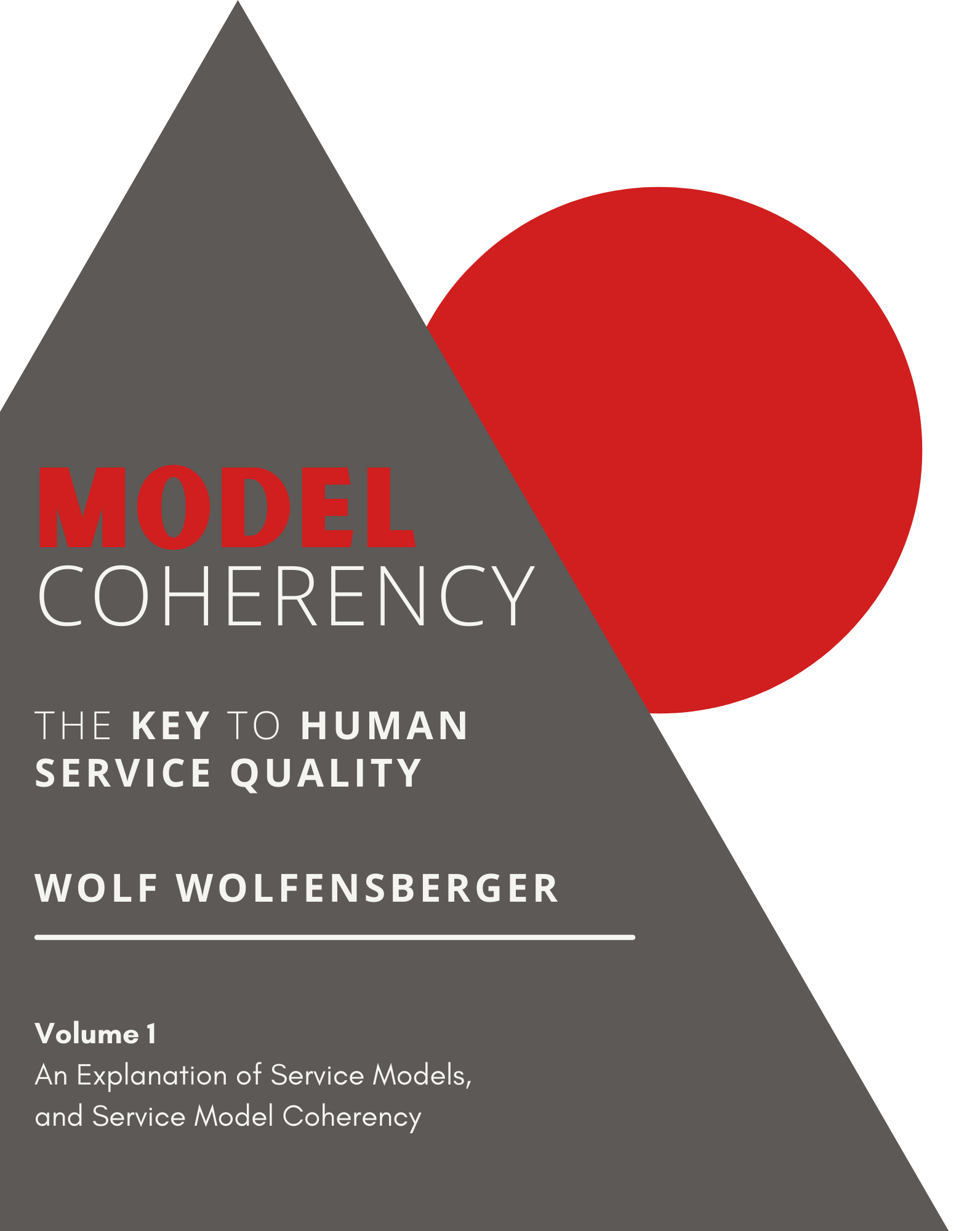
MODEL COHERENCY The Key to Human Service Quality Volume 1 – An Explanation of Service Models, and Service Model Coherency
Wolf Wolfensberger, PhD (1934-2011) was a long-time professor at the Syracuse University School of Education, where he was on the faculty as a full professor since 1973, and directed an independent training body, the Training Institute for Human Service Planning, Leadership, and Change Agentry. He had been teaching and writing on the topic of this book for several decades but held off attempting to get it published until he was satisfied of its completeness and quality. At his death in early 2011, he had by and large completed the manuscript, but it needed major editing. With the cooperation of the Trust Under Will of Nancy Artz Wolfensberger, we have undertaken the editing, and this book is the result.
Human service is a complicated endeavor, in which a number of component parts must fit together and work in harmony in order to benefit the recipients. The subject of this book, model coherency, is about putting the component parts of a service together properly--coherently. As Wolfensberger puts it, in a nutshell, model coherency answers the question: “Are the right people being served by the right people, in the right setting, using the right tools and methods?”
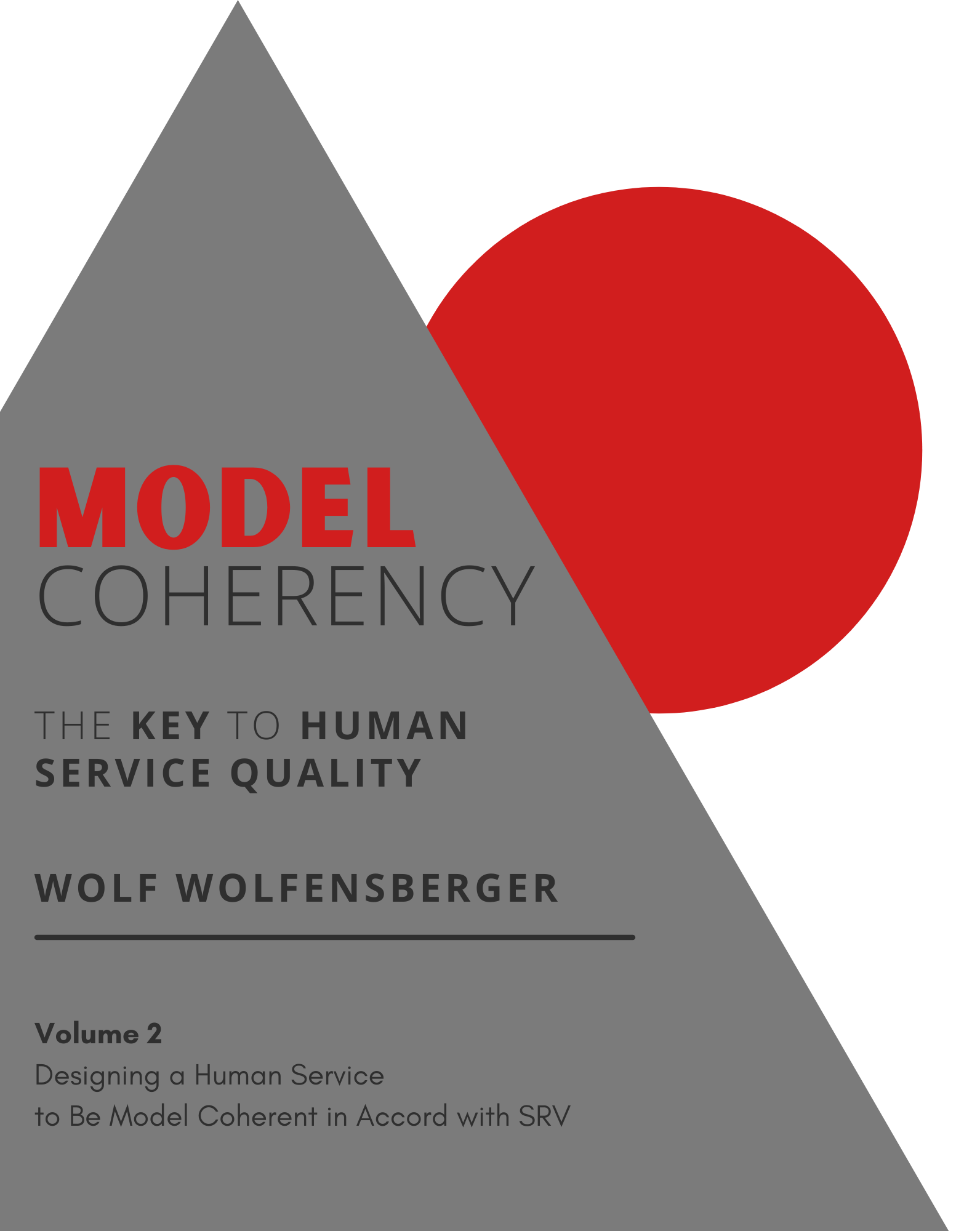
MODEL COHERENCY The Key to Human Service Quality Volume 2 – Designing a Human Service to Be Model Coherent in Accord with SRV
Wolf Wolfensberger, PhD (1934-2011) was a long-time professor at the Syracuse University School of Education, where he was on the faculty as a full professor since 1973, and directed an independent training body, the Training Institute for Human Service Planning, Leadership, and Change Agentry. He had been teaching and writing on the topic of this book for several decades but held off attempting to get it published until he was satisfied of its completeness and quality. At his death in early 2011, he had by and large completed the manuscript, but it needed major editing. With the cooperation of the Trust Under Will of Nancy Artz Wolfensberger, we have undertaken the editing, and this book is the result.
Human service is a complicated endeavor, in which a number of component parts must fit together and work in harmony in order to benefit the recipients. The subject of this book, model coherency, is about putting the component parts of a service together properly--coherently. As Wolfensberger puts it, in a nutshell, model coherency answers the question: “Are the right people being served by the right people, in the right setting, using the right tools and methods?”
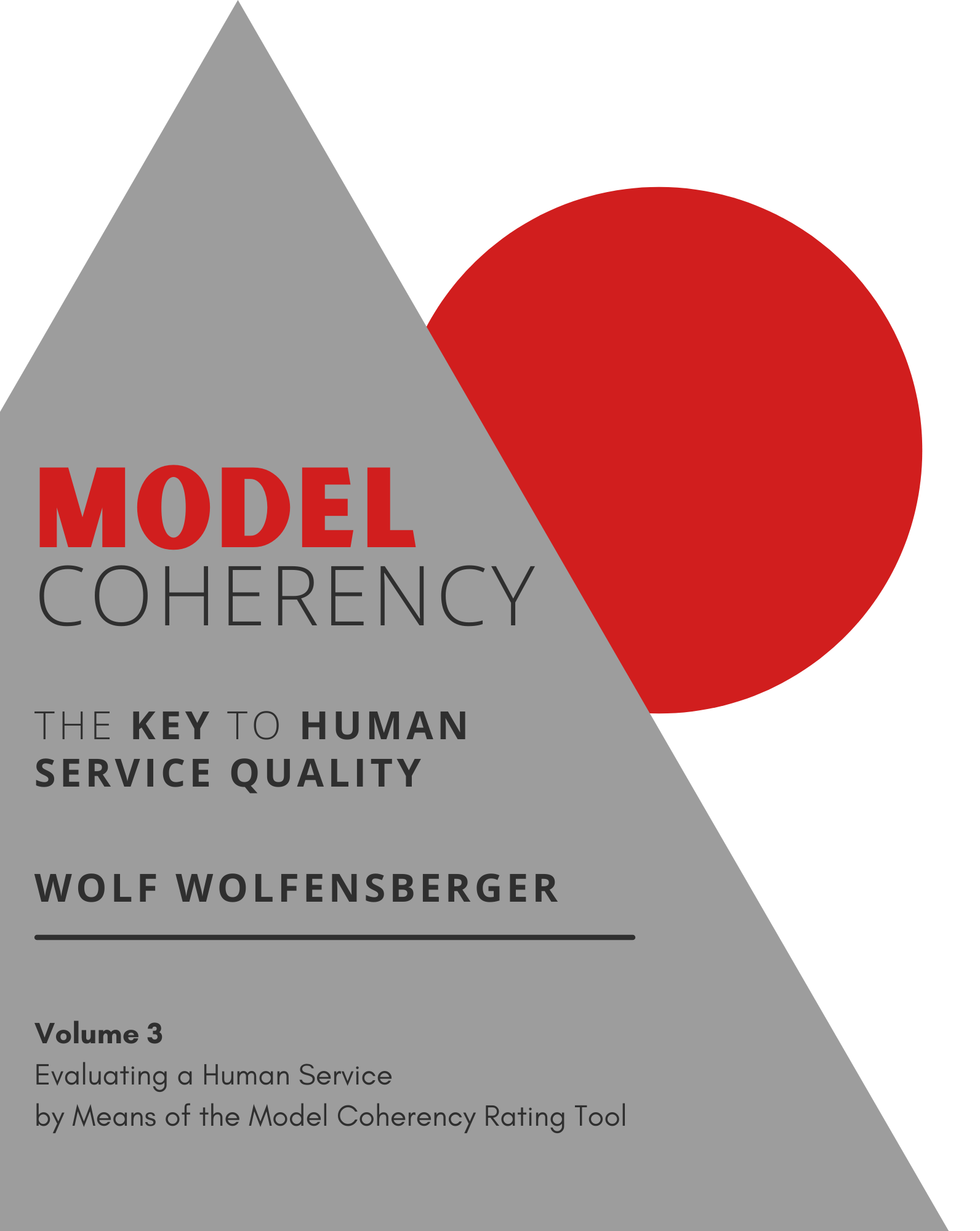
MODEL COHERENCY The Key to Human Service Quality Volume 3 – Evaluation a Human Service by Means of the Model Coherency Rating Tool
Wolf Wolfensberger, PhD (1934-2011) was a long-time professor at the Syracuse University School of Education, where he was on the faculty as a full professor since 1973, and directed an independent training body, the Training Institute for Human Service Planning, Leadership, and Change Agentry. He had been teaching and writing on the topic of this book for several decades but held off attempting to get it published until he was satisfied of its completeness and quality. At his death in early 2011, he had by and large completed the manuscript, but it needed major editing. With the cooperation of the Trust Under Will of Nancy Artz Wolfensberger, we have undertaken the editing, and this book is the result.
Human service is a complicated endeavor, in which a number of component parts must fit together and work in harmony in order to benefit the recipients. The subject of this book, model coherency, is about putting the component parts of a service together properly--coherently. As Wolfensberger puts it, in a nutshell, model coherency answers the question: “Are the right people being served by the right people, in the right setting, using the right tools and methods?”

The Normalization Principle and Some Major Implications to Architectural-Environmental Design
This monograph deals with those interior and exterior aspects of a human service facility that have social or physical implications to a citizen's skill development, personal growth, self-image, public image, or social integration. It will not (or only tangentially) deal with physical design features that constitute access or utilization obstacles to physically handicapped persons because that issue is covered in other works..
The theoretical base for this monograph consists of an orientation to the research and theory concerned with the processes by which people value or devalue other people. As explained later, the principle of normalization is merely a systematic formulation of how to maximize the likelihood that people who have been socially defined as deviant (devalued) become socially valued or revalued. We propose that the process of systematic valuation (1.e., normalizing) is practically impossible to accomplish unless we deeply understand how devaluation (i.e., deviancy making) comes about in the first place.
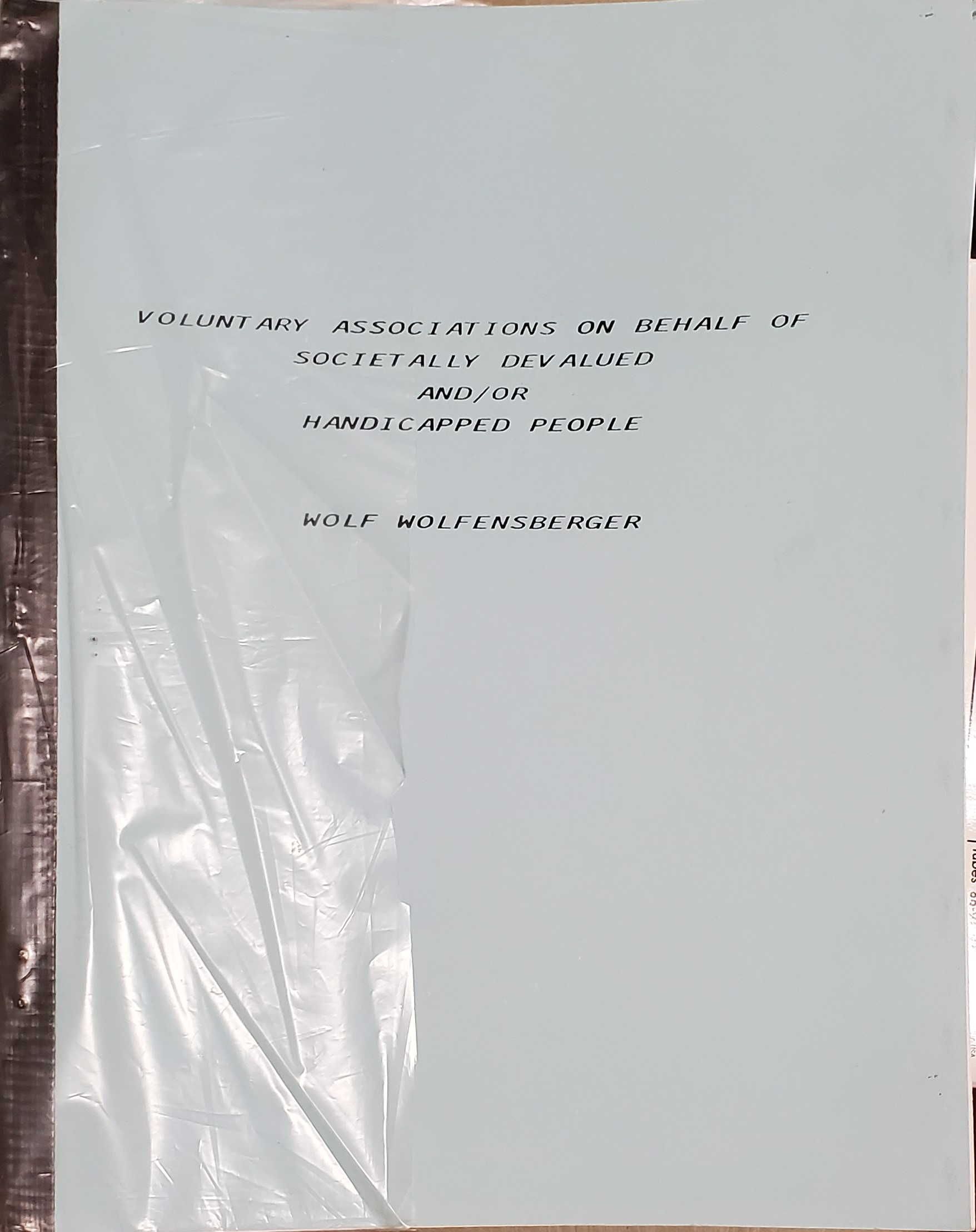
Voluntary Associations on Behalf of Societally Devalued and/or Handicapped People
This monograph is designed for members or supporters of voluntary associations (VAS) that are organized to protect or promote the welfare and interests of societally devalued people, and especially of handicapped people. Some sections will have special relevance to VAS on behalf of developmentally impaired people (such as the mentally retarded), but most of the monograph will be relevant to most VAS on behalf of devalued people, whether handicapped or not.
This monograph supersedes an earlier one entitled The Third Stage in the Evolution of Voluntary Associations for the Mentally Retarded (Wolfensberger, 1973b; for German edition, see Wolfensberger, 1977b). The content of this monograph is about triple that of its predecessor, includes new topics, and is generalized for relevance beyond the area of mental retardation..
The only issue which was covered in the Third Stage which is not covered in this volume is a detailed explanation of various types of safeguards to the welfare of handicapped people and the quality of human services to them. For the time being, readers should refer back for this material to the 1973 Third Stage monograph (pages 25-36). However, they should check periodically in the future with the publisher, since it is planned to prepare a monograph entirely devoted to an in-depth coverage of this issue. This monograph is divided into three major parts.
PART 1 provides an overview of the nature of VAS, the typical tasks that confront VAs for societally devalued -- and especially handicapped people, and the evolutionary stages through which such VAS commonly pass. It incorporates and enlarges upon a significant portion of the above-mentioned Third Stage monograph (Wolfensberger, 1973b, 1977b).
PART 2 presents a vision of the optimal relationship that should exist between VAS on behalf of societally devalued people on the one hand, and the public sector and the rest of the private sector on the other. This part is heavily based on a series of lectures given by the author, especially in Australia during 1978 and 1980 to leaders of several levels of government and of various VAS.
PART 3 examines some major challenges that confront VAs on behalf of more severely handicapped and devalued people specifically at this time and in the foreseeable future. It is heavily based on . series of lectures given to VAS on behalf of handicapped people, especially the opening address to the 1979 conference of the Ontario Association for the Mentally Retarded, and a major address before the 20th jubilee conference of the Bundesverband für spastisch Gelähmte und andere Körperbehinderte, the German spastic (cerebral palsy) soci ety, in Berlin in 1979 (Wolfensberger, 1980d).
I thank Rosemary and Gunnar Dybwad for their inspiration, guidance and help when I first began to study and write about VAS in the late 1960s and early 1970s. For encouragement in developing this particular monograph, I owe gratitude to the Georgia Advocacy Office. Other individuals too numerous to mention have helped me during the preceding ten years with various stages and parts of what eventually became this monograph.
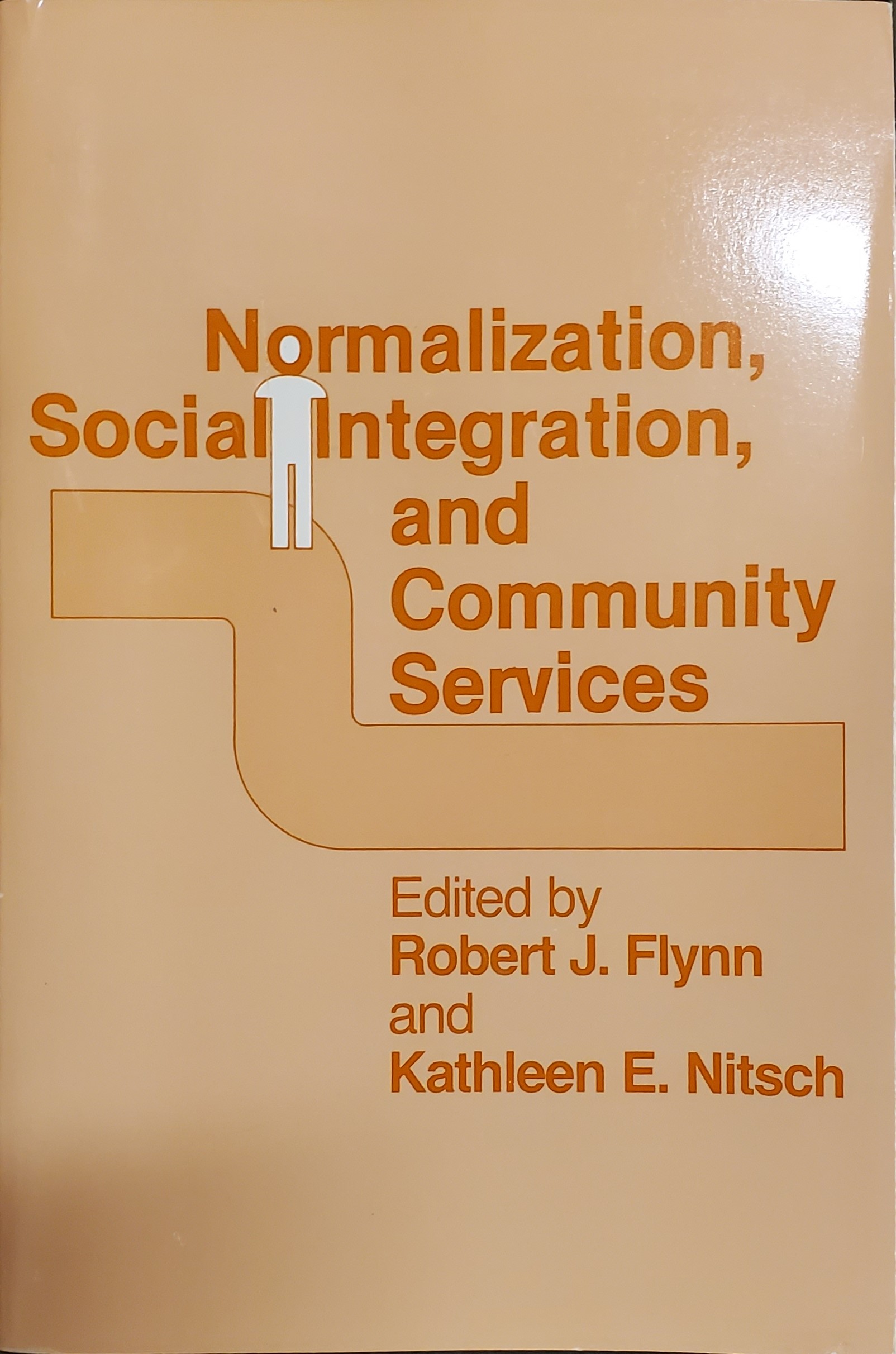
Normalization, Social Integration, and Community Services
This major treatise redefines and completely updates the principle of normalization as it relates to community services, it provides a welcome clarification of the term normalization, presents implications of normalization pertinent to community service systems, assesses accomplishments of normalization to date, and includes the first and only comprehensive bibliography of the normalization literature.
Widespread, rapid adoption of the concept of normalization has sometimes been accompanied by superficial understanding of the term, and this has often affected proper implementation. The book clarifies the meaning and implications of normalization. Part l is devoted entirely to theoretical consolidation. It consists of systematic statements by the three most influential definers of normalization, Wolfensberger, Nirje, and Bank Mikkelsen, and detailed discussion by Wolfensberger of both definitional issues and common mis understandings and criticisms.
Part Il presents selected implications of normalization and operational guidelines for putting the concept to work in community service programs. Part Ill offers a pre liminary assessment of the normalization movement to date and points out the most. critical problems and policy priorities for the continued vitality of normalization int the future
The book is greatly enriched by the inclusion of the complete bibliography of normalization literature covering 241 major works, mostly in English but including key books and papers in other languages as well.
An enormously useful book for many readers, it is especially recommended for administrators and program staff, legislators and policy makers, staff trainers, educators, and students in any profession concerned with human services
Authors :
- Robert J. Flynn
- Kathleen E. Nitsch
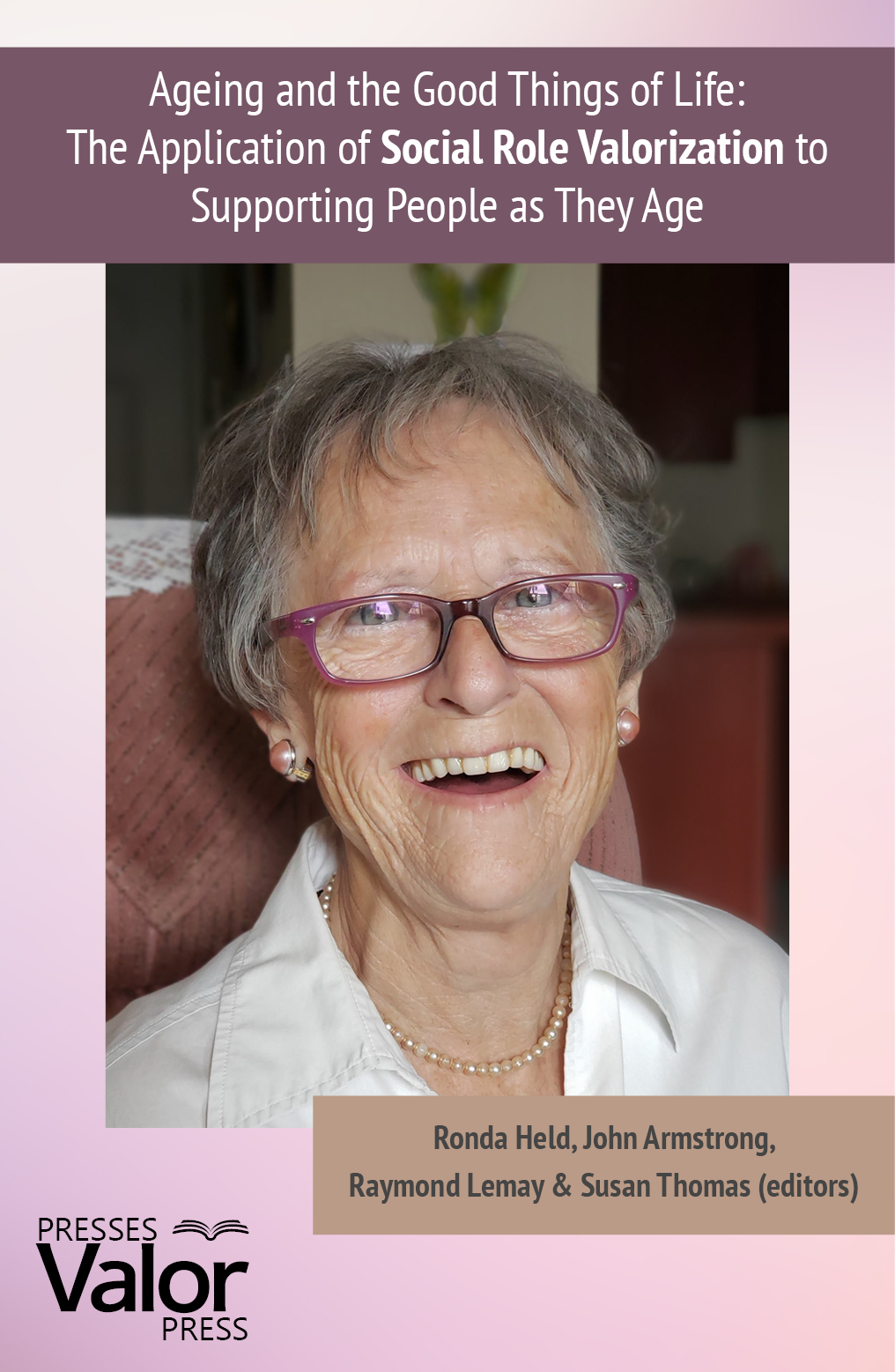
Ageing and the Good Things of Life: The Application of Social Role Valorization to Supporting People as They Age
As they age, many people lose valued social roles and their value in the eyes of others and this opens a big door to other bad things happening to them. They get cast into negative roles, such as burdensome, dependent, child once again, or object of pity. They get surrounded by negative imagery that interprets them as useless, sick, and as good as dead. They get rejected and put at physical and social distance from the larger society. These things lead to declines in competence and health, reduced well-being, even abbreviation of life itself.
This book addresses the plight of older people by looking at how they are valued in society, and the roles they are given and permitted to fill. It proposes the creation and the support of valued social roles for older people as key to their getting and holding on to the good things of life. This is embodied in a service principle called Social Role Valorization, or SRV.
Held, R., Armstrong, J., Lemay R. & Thomas, S. (Editors) (2020)
For Australia and New Zealand only, this book may be purchased from:
This book includes the following chapters:
Chapter 1 - Wolf Wolfensberger
A Brief Overview of Social Role Valorization, and Major Implications to the Elderly
Chapter 2 - Michael Rungie & Wolf Wolfensberger
The Wounding of Older People, and Their Most Common Wounds
Chapter 3 - John Armstrong
Why SRV Is Important and Relevant in the Current Context of Aged Care Service
Chapter 4 - Ronda Held
Ageing and Social Role Valorization
Chapter 5 - Lorna Sullivan
Social Role Valorization: A Conceptual Framework for Transforming Person-Centered Care for Elders
Chapter 6 - Michael Fine & Hal Kendig
Normalizing Old Age and Aged Care: Social Role Valorization and International Trends in Ageing
Chapter 7 - Michael Rungie
Roles for Older People: The Ultimate Prize of Social Role Valorization
Chapter 8 - Ronda Held, Jane Sherwin & Joyleen Thomas
Creating Measures of Real Service Quality Based on SRV: The Experiences of One Agency’s Work Towards Good Lives for Older People
Chapter 9 - Lorna Hallahan
The Better Practice Project: A Transformative Approach to Work-Integrated Learning in Social Care with Older Australian Citizens
Chapter 10 - Anouk Bolsenbroek & Hanne Laceulle
Setting the Scene for Later Life: Cultural Stories for Inspiration and Resistance
Chapter 11 - Lynda Shevellar & John Armstrong
Re-Thinking Respite in Aged Care
Chapter 12 - Jane Sherwin
Exploring Three Contemporary Residential Responses to Older People Through a Social Role Valorization Lens
Chapter 13 - Robin Starry Fields
From One Generation to Another: The Beauty of Lives Shared
Chapter 14 - Jo Massarelli
Social Role Valorization Applied to the Safeguarding of Elders
Chapter 15 - Wolf Wolfensberger
The Risk To Life Of Elderly People in the Contemporary Societal Context

